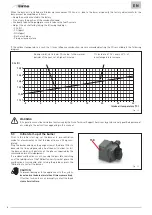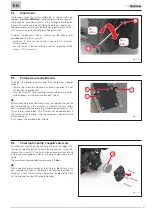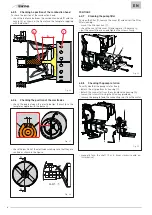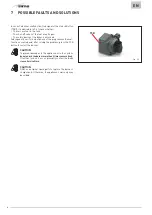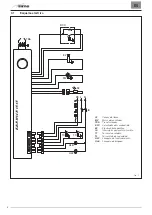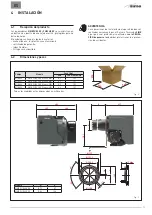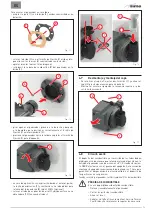
65
EN
8 APPENDIX
8.1
Use of biodiesel
The burner is suitable for working with a biodiesel blend of up
to 10%. This is a minimum requirement in conformity to the ap-
plicable standards, the regional regulations and FAME require-
ments in conformity to EN 14214.
m
CAUTION
If the burner must be used with fuels containing bio-
fuel percentages above 10%, contact the manufactu-
rer.
8.2
Important suggestions for using biofuel
blends
8.2.1
Introduction
The growing attention towards renewable and sustainable ener-
gy foreshadows an increasingly widespread use of biofuels.
If you plan to use them, a few technical aspects must be taken
into account for reducing potential faults in the burner and in
the system, besides the risk of fuel leakages.
“Liquid biofuel” is a broad term that identifies oil deriving from
numerous raw materials, including recycled cooking oil. These
types of oil must be considered and treated differently to com-
mon mineral and fossil fuels, since they are more acidic, hygro-
scopic and less stable.
Special care must be taken when storing the fuel, in the con-
veying piping, in the ancillary equipment, during filtration and in
the choice of the burner.
The classification of biofuel is important for the efficient opera-
tion of the equipment.
m
CAUTION
The owner or the manager of the plant is responsible
for thoroughly analysing the potential risks associated
with the introduction of a biofuel blend, the suitability
of the appliances and the installation.
8.2.2
General information and instructions
The fuel supplier must demonstrate conformity to an accredited
quality management system for its own storage, mixing and de-
livery processes.
In the installations, make sure that all the materials and sealing
devices of the storage tank and of the pipe conveying the oil to
the burner are compatible with biofuels.
The tank must include a high-quality biocompatible oil filter
plus a size 60 micron secondary filter for protecting the burner
against contaminations.
Whenever an existing tank must be used to store the oil, in ad-
dition to the above-mentioned checks on the materials, it is
essential that the tank be inspected above all to verify its con-
ditions and to make sure that it does not contain water or other
contaminants. If contaminants are found, deep cleaning must
be performed. If this is not done, the hygroscopic nature of the
fuel could cause complex components to dissolve and to detach
causing the appliance to malfunction.
Depending on the storage tank’s capacity and on how the plant
is used, fuels can remain inside it for a considerable period of
time. Consult the biofuel distributor for information on how to
use biocides to prevent microbial growth inside the tank and for
instructions on fuel filtering.
When commissioning the burner, check that all the combustion
parameters conform to the recommended values appearing in
the appliance’s technical manual.
Check the filters of the pipe and of the burner’s oil pump and
replace them if necessary:
– At least every 4 months during burner use
– Prior to starting the burner following a prolonged shutdown
– More frequently in case of contamination.
a
WARNING
Be particularly careful during checks and inspections
for detecting fuel leakages from sealing devices, seals
and flexible pipes.
a
WARNING
If a biofuel blend is used, consult the biofuel distri-
butor.
Содержание FUEL EV
Страница 98: ...98 ...
Страница 99: ...99 ...
Страница 100: ...Fonderie Sime S p A Via Garbo 27 37045 Legnago Vr Tel 39 0442 631111 Fax 39 0442 631292 www sime it ...


